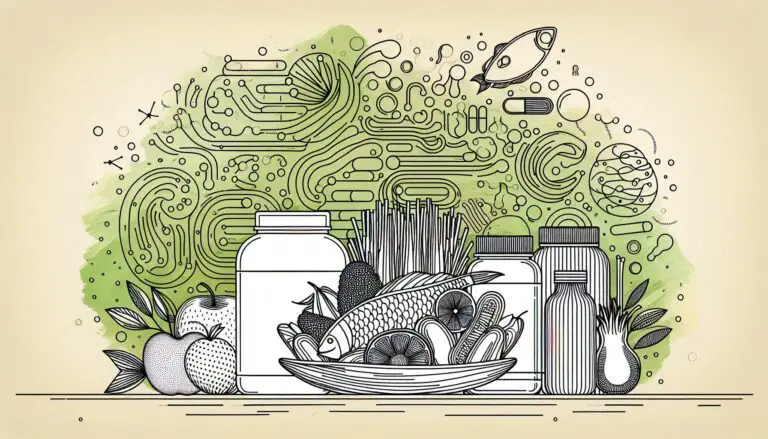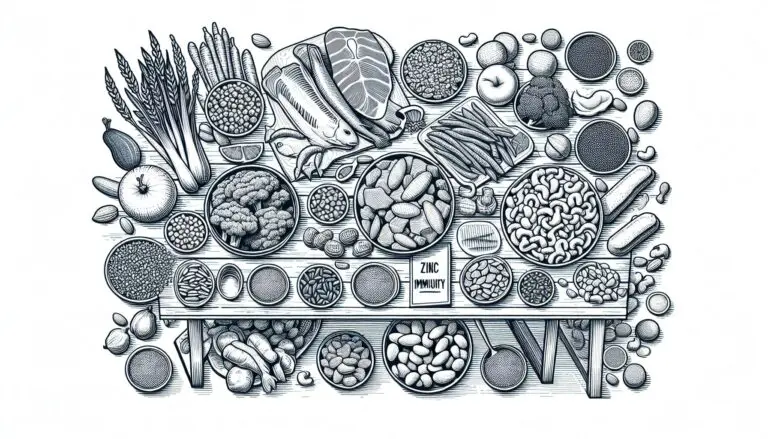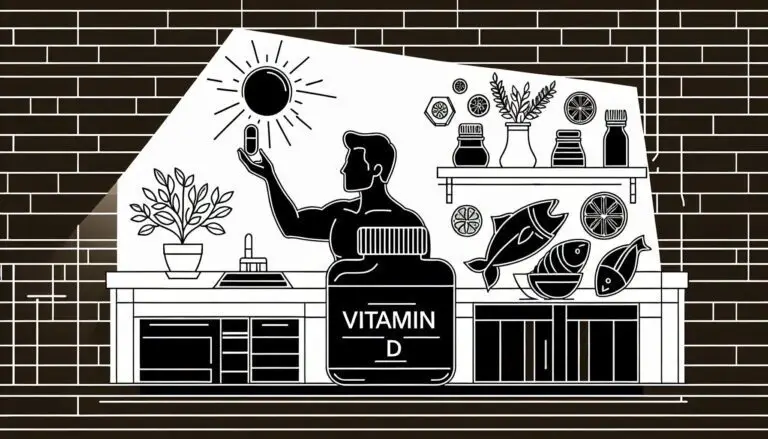Ever felt overwhelmed by the daunting effects of mold toxicity? You’re not alone. Mold exposure can wreak havoc on your health, but there’s a natural beacon of hope: antioxidants. These powerful allies are at the forefront of a natural approach to combatting the adverse effects of mold toxicity. In this text, you’ll discover how antioxidants can be your body’s best defense, offering a path to recovery that’s both effective and grounded in nature. Jump into the power of antioxidants and learn how they can support your journey to wellness, turning the tide against mold toxicity with every bite and supplement.
Understanding Mold Toxicity
When tackling mold toxicity, it’s crucial to grasp what you’re up against. Mold, a form of fungus, thrives in damp environments and can infiltrate your home through air ducts, windows, or even hitch a ride on your clothing. Once settled, it proliferates, releasing spores and mycotoxins into your living spaces. These mycotoxins are the primary culprits behind the adverse health effects associated with mold exposure.
Exposure to mold can trigger a range of symptoms that vary from person to person. Early signs often mimic those of a cold or allergies, such as sneezing, coughing, and itchy eyes. But, prolonged exposure can lead to more severe health issues, including:
- Respiratory problems
- Fatigue
- Headaches
- Difficulty concentrating
The presence of mold is not solely an issue in older buildings or those in damp climates. Modern homes, with tighter seals, can trap moisture inside, creating an ideal environment for mold growth. Hence, it’s vital to maintain proper ventilation and address any water leaks or condensation issues promptly.
Testing your home for mold is a proactive step towards ensuring a healthy living environment. Various DIY mold testing kits are available, but for definitive results, consider hiring a professional mold inspection service. They can identify hidden mold and measure the concentration of mold spores and mycotoxins in your environment.
Armed with this knowledge, you’re better equipped to tackle mold toxicity and take steps towards a healthier home and body. Incorporating antioxidants into your diet can be a powerful tool in your recovery journey, offering a natural approach to combat the effects of mold exposure.
The Role of Antioxidants in Health

Antioxidants are your body’s frontline defense against the harmful effects of free radicals—unstable molecules that can damage cells, leading to chronic diseases and aging. These powerful substances, found abundantly in fruits, vegetables, nuts, and grains, work by neutralizing free radicals, so protecting your cells from damage.
When discussing antioxidants, it’s essential to grasp the breadth of their impact on health. They play a critical role in bolstering your immune system, reducing inflammation, and protecting against various diseases, including heart disease, Alzheimer’s, and certain cancers. Also, antioxidants have a significant part in skin health, helping to combat signs of aging and promote a healthier complexion.
- Vitamins A, C, and E
- Beta-carotene
- Lycopene
- Selenium
- Flavonoids
Incorporating a diet rich in these antioxidants is pivotal, especially when recovering from mold toxicity. Mold exposure can overwhelm your body with toxins, leading to oxidative stress—a condition where free radical damage exceeds the body’s ability to counteract it. Antioxidants step in as a natural therapeutic strategy, neutralizing these radicals, supporting detoxification, and aiding in the restoration of your health.
It’s not just about eating a few antioxidant-rich foods sporadically. Consistency is key. Integrating a variety of these foods into your daily diet ensures a robust defense against mold’s toxic effects and supports overall health resilience. Think colorful plates filled with fruits and vegetables, whole grains, and lean proteins—a visual representation of health-supporting nutrients working in synergy.
Remember, while antioxidants play a crucial role in combating mold toxicity and supporting health, they’re part of a broader approach to wellness. Proper ventilation, addressing leaks promptly, and considering professional mold testing and removal are also critical steps in managing mold exposure effectively.
Types of Antioxidants to Combat Mold Toxicity

Antioxidants play a vital role in your recovery from mold toxicity. These powerful substances work tirelessly to fight the oxidative stress caused by mold exposure. Understanding which antioxidants are most beneficial can guide you in making healthier dietary choices. Here’s a rundown of key antioxidants that should be on your radar.
Vitamin C: Your go-to antioxidant for boosting the immune system. Found in citrus fruits, strawberries, bell peppers, and broccoli, Vitamin C helps neutralize free radicals and can reduce the severity of allergic reactions caused by mold exposure.
Vitamin E: An essential antioxidant for protecting your cells’ membranes from damage. Sources include nuts, seeds, spinach, and avocados. Vitamin E works synergistically with Vitamin C, enhancing its antioxidant effects.
Beta-Carotene: This antioxidant gets converted into Vitamin A in the body, which is crucial for eye health and immune function. Carrots, sweet potatoes, and leafy green vegetables are rich in beta-carotene.
Selenium: A trace mineral that plays a critical role in the body’s antioxidant defense system. Selenium-rich foods include Brazil nuts, seafood, and eggs. It’s particularly effective when combined with Vitamin E.
Flavonoids: Widely found in fruits, vegetables, tea, and wine, flavonoids can improve heart health and provide strong antioxidant effects. They’re known for their anti-inflammatory properties, which can be beneficial in recovering from inflammation induced by mold toxins.
Incorporating these antioxidants into your diet can provide a solid foundation for combating the adverse effects of mold toxicity. Regular consumption of antioxidant-rich foods not only helps in dealing with mold exposure but also fortifies your body’s overall resilience against future encounters with mold.
Remember, while diet plays a critical role in managing mold toxicity, it’s crucial to address the source of mold exposure in your environment to ensure a comprehensive recovery strategy.
Implementing Antioxidants in Your Recovery Plan

When you’re facing the challenge of mold toxicity, integrating antioxidants into your diet isn’t just a suggestion—it’s a necessity. Understanding which foods pack the most antioxidant punch allows you to tailor your diet for maximum recovery impact.
Focus on Vitamin-Rich Foods
Start by ramping up your intake of Vitamin C and E. These vitamins are powerhouses in fighting off oxidative stress caused by mold. Foods rich in Vitamin C, like oranges, strawberries, and bell peppers, not only support your immune system but also aid in repairing damaged cells. Similarly, Vitamin E, found in almonds, spinach, and avocados, plays a critical role in protecting your body’s tissues against toxins.
Add Selenium and Beta-Carotene to Your Diet
Don’t overlook the importance of selenium and beta-carotene. Selenium, an essential mineral, boosts your body’s defense mechanism and is abundant in Brazil nuts, tuna, and eggs. Beta-carotene, which your body converts to Vitamin A, helps fight inflammation and is plentiful in sweet potatoes, carrots, and kale.
Flavonoids: The Hidden Gem
Incorporating flavonoids through berries, apples, and onions enhances your antioxidant defense, offering an additional layer of protection against mold-induced oxidative stress. These compounds, renowned for their anti-inflammatory properties, are crucial in healing and recovery.
- Opt for a colorful plate: The more varied the colors of your food, the broader the range of antioxidants.
- Supplement wisely: While getting antioxidants from food is ideal, high-quality supplements can fill in any gaps.
- Stay hydrated: Water helps flush toxins from your body, enhancing the efficacy of antioxidants.
By mindfully integrating these antioxidant-rich foods and practices into your daily routine, you’re taking a significant step towards mitigating the effects of mold toxicity. Remember, consistency is key—for the best results, make these dietary adjustments a permanent part of your lifestyle.
Embracing a Well-rounded Approach
When facing mold toxicity, it’s crucial to adopt a multifaceted strategy that goes beyond just including antioxidants in your diet. Your recovery journey should be comprehensive, incorporating not only nutrition but also lifestyle changes that support overall wellbeing.
Physical Activity and Fresh Air: Regular exercise can boost your body’s natural detoxification process, enhancing your ability to combat the effects of mold exposure. Also, spending time outdoors, particularly in natural, green environments, can improve your mental health and alleviate some symptoms associated with mold toxicity.
Mold Remediation Efforts: It’s essential to tackle the root of the problem by addressing mold at its source. Consider professional mold remediation for your home or workspace to ensure a safe, mold-free environment. This step is vital in preventing further exposure and aiding in a full recovery.
Mental Health Support: The impact of mold toxicity isn’t just physical. Many individuals experience mental health challenges such as anxiety, depression, or brain fog. Seeking support from a mental health professional can be an invaluable part of your recovery process. Techniques like mindfulness, meditation, and cognitive behavioral therapy may also offer relief and support your overall wellbeing.
Incorporating these elements into your recovery plan can significantly enhance your resilience against mold toxicity. By adopting a well-rounded approach, you’re not just fighting symptoms but also fortifying your body and mind against future challenges. Prioritizing both your physical and mental health is key to a successful recovery from mold exposure.
Conclusion
Embracing a holistic approach to combat mold toxicity is key. Remember, it’s not just about loading up on antioxidants. It’s about creating a balanced lifestyle that supports your body’s natural defenses. Regular exercise, outdoor activities, and addressing mold at its source form the foundation of a solid recovery plan. Don’t overlook the importance of mental health support during this journey. By taking these steps, you’re not just fighting against mold toxicity; you’re building a healthier, more resilient you. Stay committed to this comprehensive approach, and you’ll see the difference it makes in your recovery and overall well-being.







302d80
kypg1m